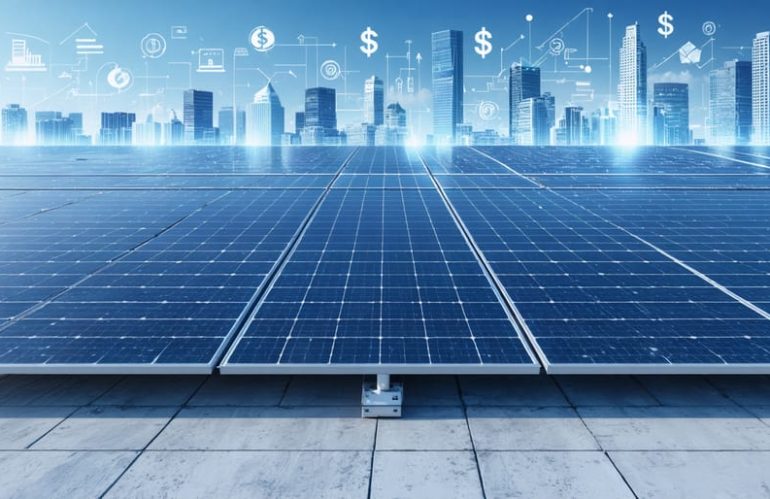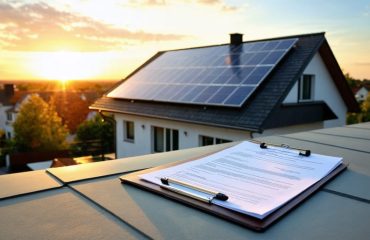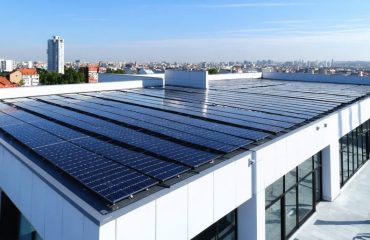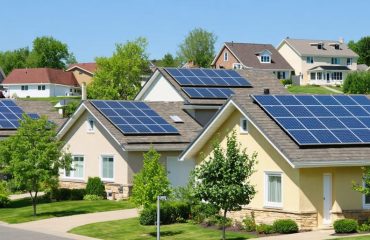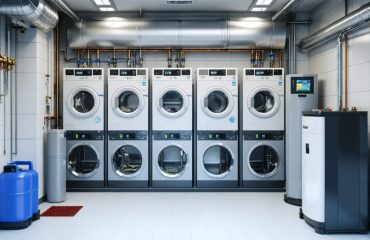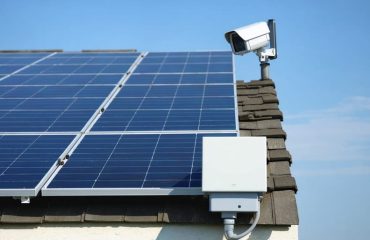Commercial solar installations represent a significant but increasingly attractive investment for businesses, with costs typically ranging from $50,000 to $2 million depending on system size and complexity. Modern commercial solar systems deliver an average return on investment within 3-7 years through reduced energy bills, tax incentives, and increased property value. While initial costs may seem daunting, federal tax credits currently cover 30% of installation expenses, and many states offer additional incentives that can reduce total costs by up to 50%.
The key factors driving commercial solar installation costs include system size (typically $1.50 to $3.50 per watt), roof condition and structural requirements, equipment quality, and local labor rates. Business owners considering solar installation should focus on three critical aspects: comprehensive site assessment, equipment selection, and installer credentials. Taking time to evaluate these factors helps ensure optimal system performance and maximizes long-term financial benefits while minimizing unexpected expenses.
Understanding these cost components empowers business owners to make informed decisions about their solar investment and secure the most competitive pricing for their specific needs.
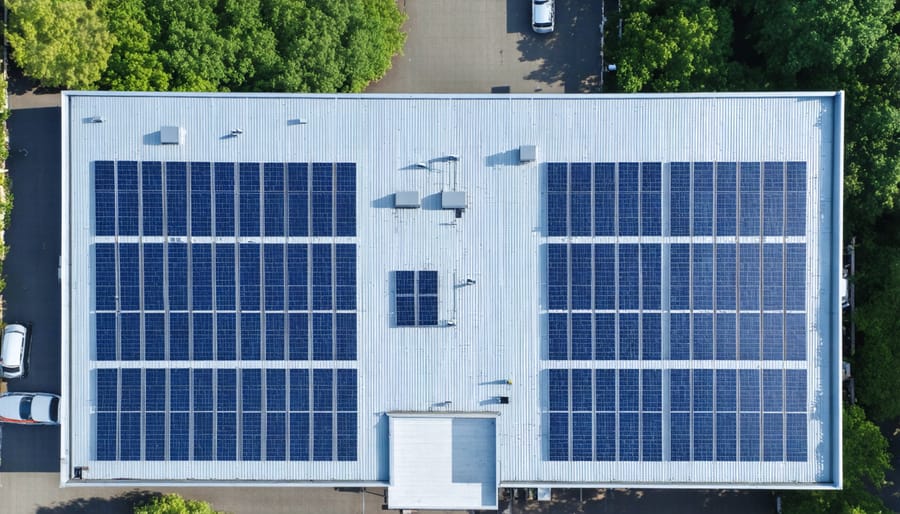
Breaking Down Commercial Solar Installation Costs
Equipment and Material Costs
The largest portion of your commercial solar installation costs will come from the equipment itself. Solar panels typically range from $0.70 to $1.50 per watt for commercial-grade panels, with premium models offering higher efficiency rates. For a 100kW system, panel costs alone can range from $70,000 to $150,000.
Inverters, essential for converting DC power to usable AC power, represent about 10-15% of your total system cost. String inverters for commercial installations usually cost between $0.15 and $0.30 per watt, while microinverters might run slightly higher but offer better performance monitoring and reliability.
The mounting system, which secures your panels to the roof or ground, typically accounts for 10% of the total cost. Ballasted roof mounts generally cost $0.10-$0.15 per watt, while ground-mounting systems may run higher at $0.15-$0.25 per watt due to additional materials and labor requirements.
Additional equipment costs include monitoring systems, electrical components, and safety equipment, which collectively add another 15-20% to your equipment budget. While these costs may seem substantial, remember that quality equipment ensures better long-term performance and reliability.
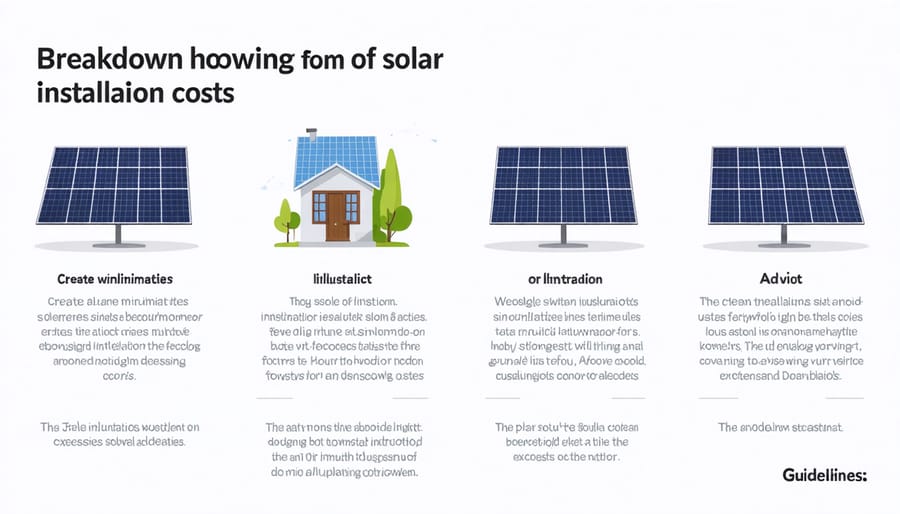
Labor and Installation Expenses
Labor and installation expenses typically account for 25-35% of your total commercial solar project cost. A skilled workforce of certified solar installers, electricians, and project managers is essential for a successful installation. The timeline for completion varies based on system size, with most commercial installations taking 4-8 weeks from start to finish.
Installation costs are influenced by several factors, including roof condition, system complexity, and site accessibility. Ground-mounted systems often require more labor hours due to additional site preparation and foundation work. Rooftop installations might need structural reinforcement, which can add to labor costs but ensures long-term safety and performance.
You can expect higher labor costs in urban areas or regions with stricter building codes, as these often require additional safety measures and permits. However, working with experienced installers can actually save money in the long run by preventing costly mistakes and ensuring optimal system performance.
Many installers offer warranties on their workmanship, typically ranging from 5-10 years, providing peace of mind for your investment. It’s worth noting that more experienced installation teams might charge higher rates but often complete projects more efficiently and with fewer complications.
Protection Policies: Safeguarding Your Investment
Insurance Coverage Options
Protecting your commercial solar installation with appropriate insurance coverage is crucial for long-term peace of mind and financial security. When considering smart protection for solar investments, several insurance options are available to business owners.
Property insurance typically forms the foundation of your coverage, protecting against physical damage from weather events, accidents, and vandalism. Many commercial property policies can be extended to include solar installations, but it’s essential to verify specific coverage details with your provider.
Business interruption insurance is another vital consideration, as it covers potential revenue losses if your solar system becomes damaged and temporarily inoperative. This coverage helps maintain cash flow while repairs are being completed.
Professional liability insurance protects against claims related to system design or installation errors, while equipment breakdown coverage handles mechanical failures and electrical malfunctions. Understanding insurance coverage for solar installations is crucial for maintaining your investment’s value.
Many insurers now offer specialized renewable energy insurance packages that combine multiple coverage types, often including:
– Property damage protection
– Public liability coverage
– Performance guarantee insurance
– Environmental risk protection
It’s recommended to work with an insurance provider experienced in renewable energy systems to ensure comprehensive coverage tailored to your specific installation.
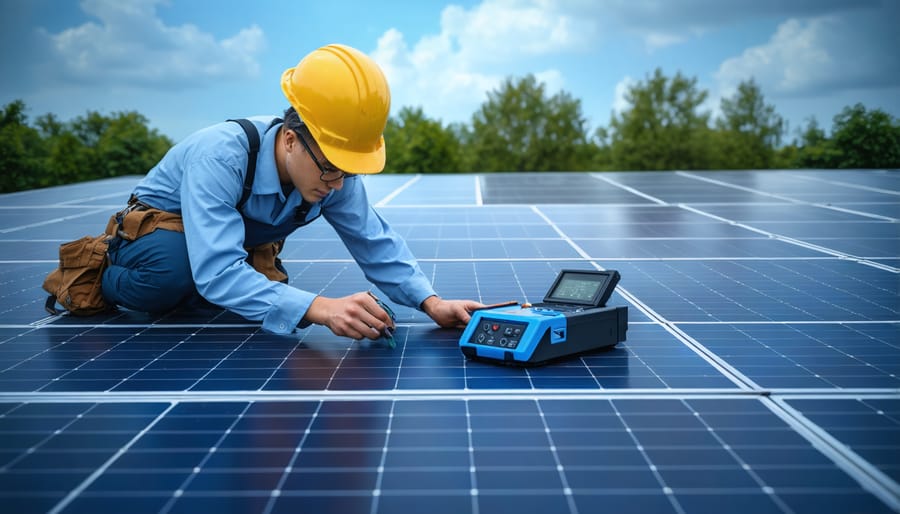
Warranty Protection
When investing in a commercial solar installation, you’ll benefit from comprehensive warranty protection that safeguards your investment for decades. Most solar panel manufacturers offer warranties ranging from 25 to 30 years, guaranteeing that your panels will maintain at least 80% of their original power output during this period. This performance warranty ensures consistent energy production and reliable savings throughout the system’s lifetime.
Equipment warranties typically cover manufacturing defects and material failures. Premium solar panel brands often provide broader coverage, including protection against environmental damage and degradation. Inverter warranties usually span 10 to 15 years, with options to extend coverage for additional peace of mind.
The installation warranty is equally important, typically covering workmanship for 5 to 10 years. This protection addresses any issues related to mounting, wiring, or other installation-specific concerns. Reputable installers often offer comprehensive maintenance packages alongside their warranties, ensuring optimal system performance and quick resolution of any issues that may arise.
Be sure to carefully review all warranty documentation and maintain proper records of your installation. Many warranties require regular maintenance and professional servicing to remain valid. Understanding these requirements and keeping up with recommended maintenance schedules will help protect your investment and maximize your system’s long-term value.
Cost-Saving Benefits of Protection Policies
Risk Mitigation Value
Implementing comprehensive protection policies for your commercial solar installation can significantly reduce long-term costs through effective risk management. Insurance coverage, warranty programs, and maintenance agreements work together to safeguard your investment and prevent unexpected expenses. Most commercial insurance policies can be extended to cover solar installations, but it’s essential to verify system size coverage limits and specific protections for weather damage, equipment malfunction, and potential liability issues.
Performance guarantees from manufacturers and installers provide additional financial security by ensuring your system generates the promised energy output. These guarantees typically cover replacement costs if panels underperform, protecting your expected return on investment. Regular maintenance agreements, while requiring upfront commitment, prevent costly emergency repairs and system downtime.
Many insurance providers offer reduced premiums for solar installations that include advanced monitoring systems and safety features. These monitoring systems can detect potential issues before they become major problems, reducing repair costs and maintaining optimal system efficiency. By implementing these protective measures, businesses can expect to save 15-25% on long-term operational costs while ensuring their solar investment remains profitable throughout its lifecycle.
Return on Investment Calculations
Calculating the return on investment (ROI) for your commercial solar installation involves weighing initial costs against long-term savings. Most commercial solar systems pay for themselves within 3-7 years, offering an impressive ROI that continues to grow over the system’s 25-30 year lifespan.
To determine your specific ROI, consider these key factors:
– Current monthly electricity costs
– Available solar incentives and tax breaks
– Average daily sun exposure
– System size and efficiency
– Annual maintenance costs
For example, a 100kW commercial system costing $200,000 might save $30,000 annually in electricity costs. With federal tax incentives covering 30% of installation costs and additional state rebates, your net investment could drop to around $120,000. At $30,000 yearly savings, you’d reach the break-even point in just 4 years.
Beyond direct energy savings, solar installations often increase property values and attract environmentally conscious tenants or customers. Many businesses report additional benefits like enhanced brand reputation and reduced operating costs. When factoring in rising utility rates, which typically increase 2-3% annually, the long-term financial advantages become even more compelling.
Remember to include potential revenue from Solar Renewable Energy Credits (SRECs) in your calculations, as these can significantly boost your overall returns.
Commercial solar installation represents a significant but rewarding investment for businesses looking to reduce their operating costs and environmental impact. While initial costs typically range from $50,000 to $500,000 depending on system size, the long-term benefits far outweigh the upfront investment. Through available tax incentives, rebates, and energy savings, most businesses can expect to recover their initial investment within 5-7 years.
To move forward with your solar installation project, consider these essential next steps: First, conduct a thorough site assessment to determine your facility’s solar potential. Next, obtain multiple quotes from reputable solar installers to compare costs and services. Research available federal, state, and local incentives to maximize your savings. Finally, review financing options, including solar loans, leases, and power purchase agreements, to determine the best fit for your business.
Remember that professional installation by certified contractors, proper maintenance, and comprehensive warranty coverage are crucial for protecting your investment. By carefully planning your solar project and working with qualified professionals, you’ll be well-positioned to harness the power of solar energy while securing long-term financial benefits for your business.

